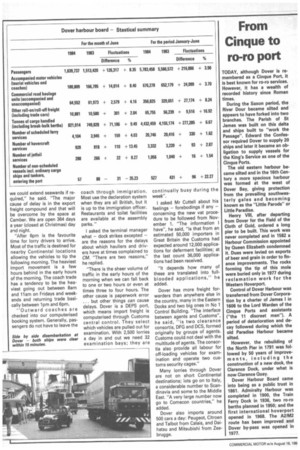From Cinque to ro-ro port
Page 40

If you've noticed an error in this article please click here to report it so we can fix it.
TODAY, although Dover is remembered as a Cinque Port, it is best known for ro-ro services. However, it has a wealth of recorded history since Roman times.
During the Saxon period, the River Dour became silted and appears to have forked into two branches. The Parish of St James was built on this delta and ships built to "work the Passage". Edward the Confessor required Dover to supply 20 ships and later it became an obligation to supply vessels for the King's Service as one of the Cinque Ports.
The old eastern harbour became silted and in the 16th Century a more spacious harbour was formed at the west of Dover Bay, giving protection from the prevailing southwesterly gales and becoming known as the "Little Parods" or Little Paradise.
Henry VIII, after departing from Dover for the Field of the Cloth of Gold, ordered a long pier to be built. This work was never completed and in 1582 a Harbour Commission appointed by Queen Elizabeth condemned it. Dues were levied on exports of beer and grain in order to finance improvements. The rocks forming the tip of this mole were buried only in 1977 during reclamation work for the Western Hoverport.
Control of Dover Harbour was transferred from Dover Corporation by a charter of James I in 1606 to the Lord Warden of the Cinque Ports and assistants ("the 11 discreet men"). A period of deterioration and decay followed during which the old Paradise Harbour became silted.
However, the rebuilding of the North Pier in 1791 was followed by 50 years of improvements, including the construction of a new dock, the Clarence Dock, under what is now Clarence Quay.
Dover Harbour Board came into being as a public trust in 1861. Admiralty Harbour was completed in 1900, the Train Ferry Dock in 1936, two ro-ro berths planned in 1950; and the first international hoverport opened in 1968. The A2/M2 route has been improved and Dover by-pass was opened in 1977.








































































